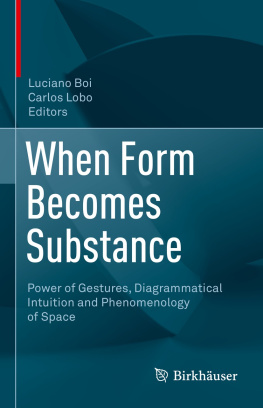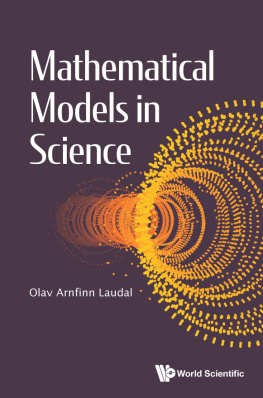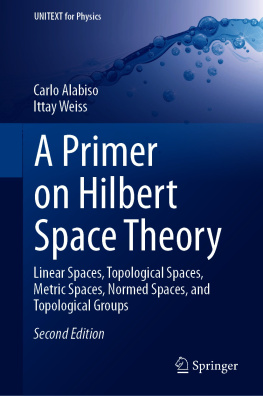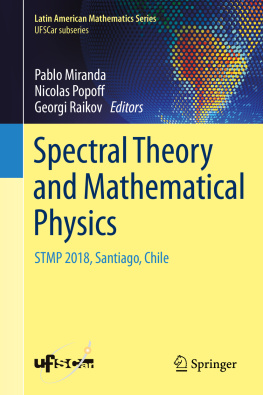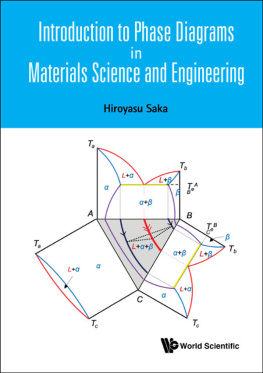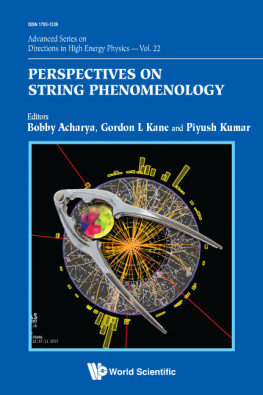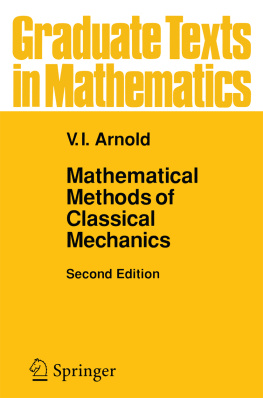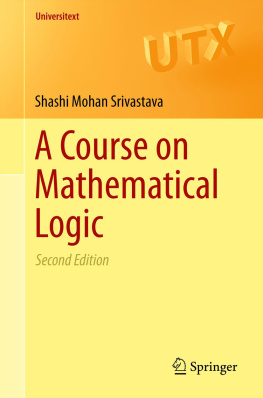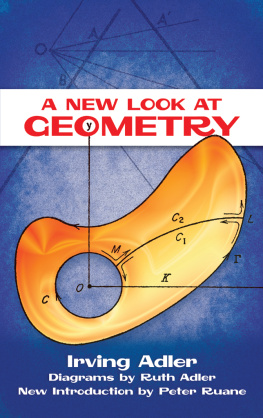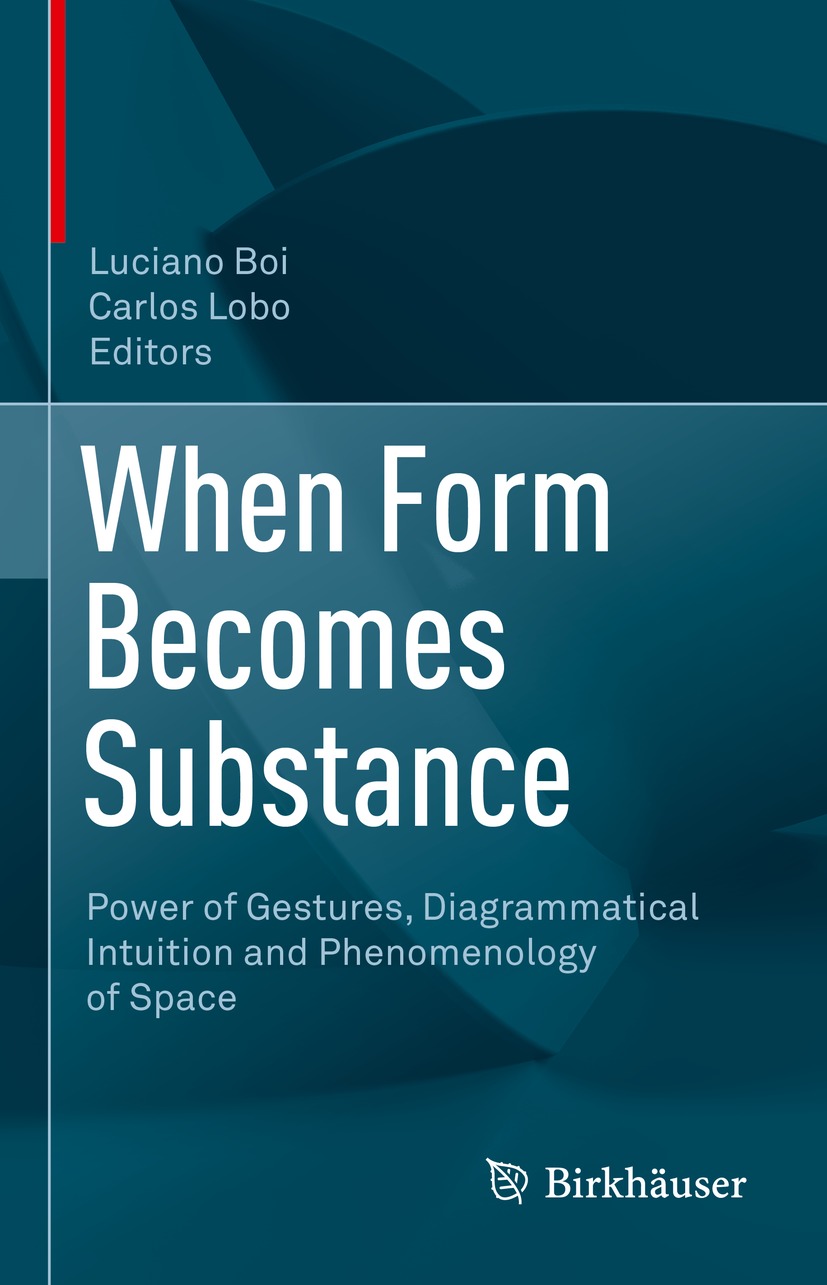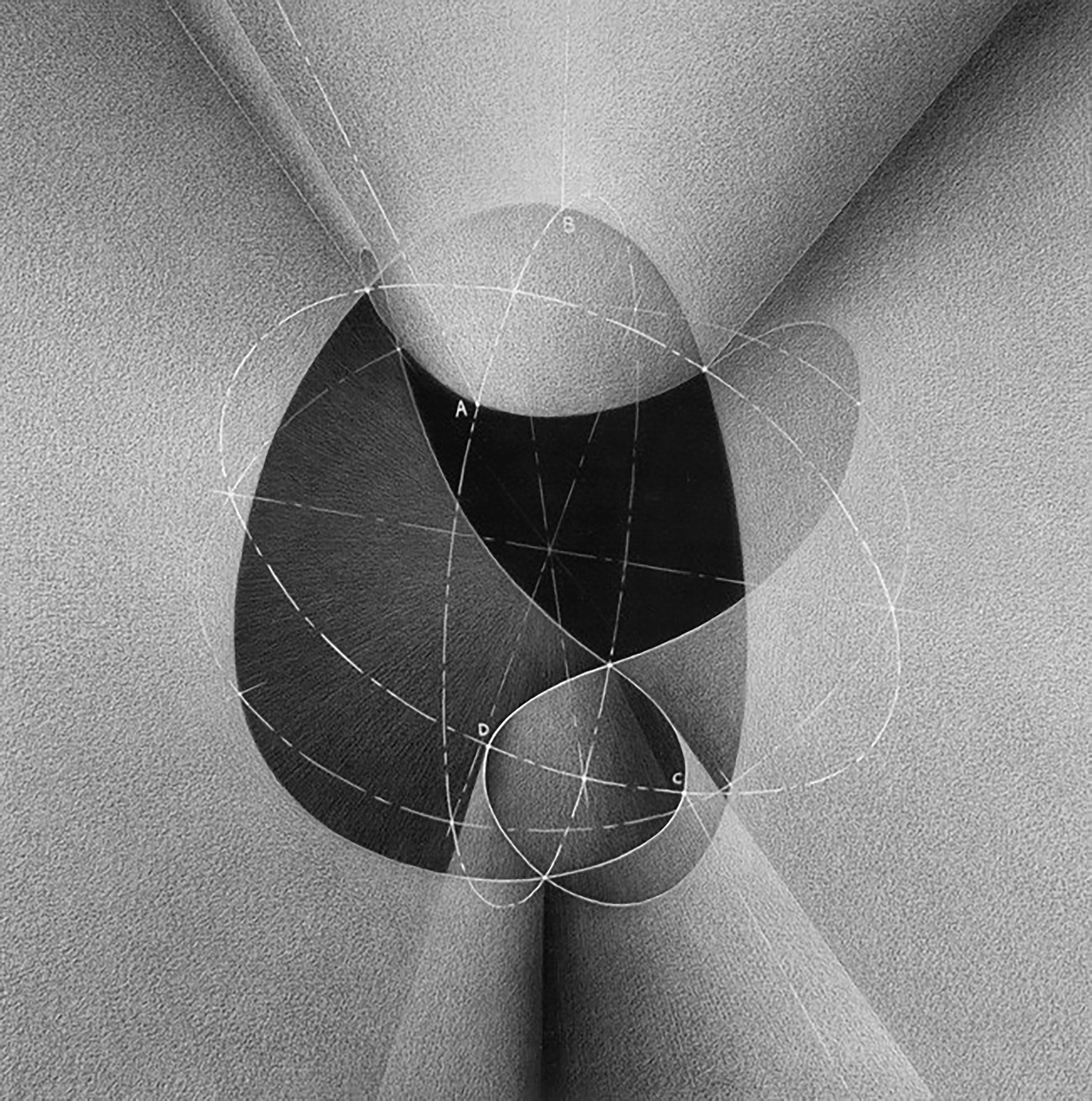Editors
Luciano Boi
Centre de Mathmatiques, Ecole des Hautes Etudes en Sciences Sociales, Paris, France
Carlos Lobo
Centre Gilles-Gaston Granger, Universit dAix-Marseille, Aix & Marseille, France
ISBN 978-3-030-83124-0 e-ISBN 978-3-030-83125-7
https://doi.org/10.1007/978-3-030-83125-7
The Editor(s) (if applicable) and The Author(s), under exclusive license to Springer Nature Switzerland AG 2022
This work is subject to copyright. All rights are solely and exclusively licensed by the Publisher, whether the whole or part of the material is concerned, specifically the rights of translation, reprinting, reuse of illustrations, recitation, broadcasting, reproduction on microfilms or in any other physical way, and transmission or information storage and retrieval, electronic adaptation, computer software, or by similar or dissimilar methodology now known or hereafter developed.
The use of general descriptive names, registered names, trademarks, service marks, etc. in this publication does not imply, even in the absence of a specific statement, that such names are exempt from the relevant protective laws and regulations and therefore free for general use.
The publisher, the authors and the editors are safe to assume that the advice and information in this book are believed to be true and accurate at the date of publication. Neither the publisher nor the authors or the editors give a warranty, expressed or implied, with respect to the material contained herein or for any errors or omissions that may have been made. The publisher remains neutral with regard to jurisdictional claims in published maps and institutional affiliations.
This book is published under the imprint Birkhuser, www.birkhauser-science.com by the registered company Springer Nature Switzerland AG
The registered company address is: Gewerbestrasse 11, 6330 Cham, Switzerland
Introduction
Specialists from various backgrounds, each recognised as references in their field or promising to become so, have been invited in January 2018 to reflect and exchange on a theme that was on the way to becoming a commonplace. This conference was guided by the firm intention of renewing this theme by reactivating all the dimensions that may have been convened in the past, but in scattered order, without avoiding salutary tensions and contradictions.
Such dispersion could not be avoided once again and is, no doubt, due to the nature of the theme itself. One of its poles is the diagrammatic and the other is the question of space as they intervene in the development of human knowledge in its broadest and most encompassing sense. By indexing these elements under the aegis of a questioning that crosses mathematics, physics, biology, philosophy, literature, and art, that of form, we have tried not to drown this heterogeneity under an even broader amphibology, but to turn it towards what resonates as a future or even a promise.
Indeed, diagrams play a fundamental role in the mathematical visualisation and philosophical analysis of forms in space. Some of the most interesting and profound recent developments in contemporary sciences, whether in topology, geometry, dynamic systems theory, quantum field theory, or string theory, have been made possible by the introduction of new types of diagrams, which, in addition to their essential role in the discovery of new classes of spaces and phenomena, have contributed to enriching and clarifying the meaning of the operations, structures, and properties which are at the heart of these spaces and phenomena. This multiplicity of uses covers a certain polysemy that should also be questioned. Diagrams, which are often related to images, drawings, figures, and models, implement a more imaginative and pictorial thinking of scientific and artistic practice, and combine gesture, invention, and meaning. They show that it is possible to elaborate a theory, a model, abstract or concrete, like a thought in movement, which originates in a space that is itself to be reinvented and unfolds in its own time. Developing a diagrammatic thinking thus amounts to trying to understand the dynamics of transformation and the processes of emergence of new properties and qualities of spaces and phenomena.
This volume wants to examine the importance today of diagrams of knots, links, braids, fields, interactions, strings, etc., in topology and geometry, in quantum physics and cosmology, but also in the theories of perception, in the plastic arts and in philosophy. To this end, we propose to study different cases of mathematical and physical theories in which diagrams play an important role, philosophical and phenomenological approaches to space, time, and perception, as well as artistic practices strongly inspired by diagrammatic thinking.
Topological Visualisation, or How to Apprehend the Invisible
The representation of space in topology require a process of mathematical visualisation (of idealisation or imagination), which calls upon a new type of intuition, more conceptual and at the same time more pictorial (diagrammatic), and resolutely distant from immediate sensations and empirical intuition. In topology, the figure, the drawing, the diagram, or the graph (in this context, we attribute to these words the same status) are no longer the image of something, of an external object that the image would be in charge of representing, but are themselves the object that represents a universe of relations and hidden properties absent from the image. The semiotization of the status of the image is even more developed there than in other sciences and has reached a very fine level.
Topology allows another approach to the study of objects which does not restrict itself to quantitative relations of size and visual aspects, but rather considers the form (i.e. the image of a deformation, either an embedding or an immersion) as a whole, as well as the spectrum of possible variations (continuous or discrete) of its configurations. It has changed profoundly our scientific thought and culture of the image; it is the domain par excellence of images (figures, drawings) in the new and particular sense we have just outlined. It is the most abstract (but, in another sense, the most concrete) part of mathematics, which is defined as the science of transformations of extended objects and more or less abstract spaces by continuous deformation, that is to say, without tearing or gluing. In this field of mathematics, the notions of distance and length no longer play any role, and the concept of homotopy, or more generally of homology proves to be powerful to account for the similarity and intrinsic relations between two objects, two figures, two surfaces, or, more generally, between two abstract spaces. The criterion of similarity by superimposition or by reproduction of sizes, and thus the very notion of visible resemblance, takes all meaning in topology. In no other field of mathematics is the distance from visible reality and the model of figuration as important as it is in topology, where a much subtler concept close to the intrinsic structure of objects plays a fundamental role, namely the qualitative concept (in the topological sense, i.e. where no metric relations intervene) of equivalence or homeomorphism. Thus, in its broad meaning, topology studies the properties of geometrical objects such as manifolds, spaces, knots, and braids that conserve their essential properties when submitted to a certain kind of transformations called homeomorphisms and homotopies.

